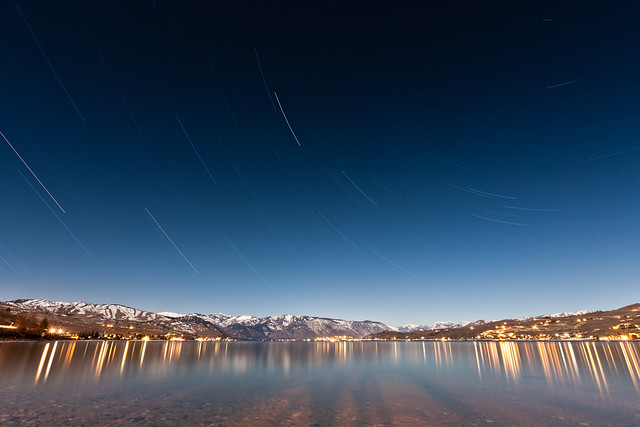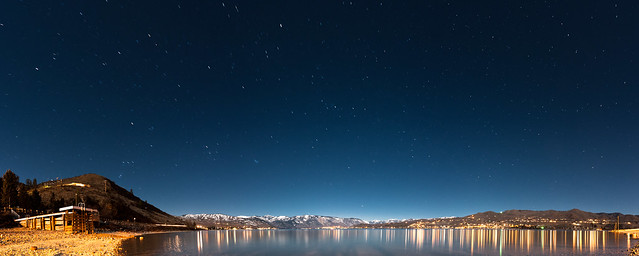Well, fresh from my trip with Haley, of course the next several days will be spent working on images. Besides taking them all, the initial review on my computer is one of my favorite parts of the process. It feels great to see them pop up on a large screen; like they have a new life when viewed properly (which cannot be said for the 1ds ii LCD…)
To begin, I randomly poked about on a few images from Leavenworth that weren't too exciting. I decided to mess a bit with HDR, and spent a considerable amount of time stitching a 3 image wide, 7 shots per image, HDR panorama. Needless to say, this took a bit of time. Fortunately, I was having a nice conversation with my friend over ventrillo at the time, so it wasn't as much of a slog fest. The end result was kind of boring…not sure if I'll upload or not.
Now, you may wonder why I decided to edit my most boring images first. Well, truth be told, the very first thing I did when I returned from my trip was to dump my cards on my computer, after which I immediately went to a set of night images I took during our last night on Lake Chelan. These were probably the images that most excited me out of the thousand or so I took this weekend. Unfortunately, the particular image I was most excited with was initially a bit vexing. It happened to be an hour long exposure of the perfectly clear night sky and moon-illuminated mountains which surround the lake. It's the longest single exposure I've done since I was in Canada several years ago, and seeing it on the big screen was akin to having film developed and seeing the images for the first time. However, it was sub-par for a few reasons:
- It was COVERED in sensor dust, due to the huge exposure length, small aperture, and expanses of subtle, single-color gradients (ie, the night sky).
- It was overexposed by about 1/3rd of a stop (which ended up being a big deal), due to my over-correction of my tendency to under-expose night images.
- Due to my choice to shoot at F/11 (mostly to keep the camera at native ISO), the star trails weren't as bright as I would have liked.
Being sub-par, I was pretty disappointed in myself initially, because they were kind of silly mistakes (except 3, which was a technical tradeoff), and the scene was absolutely stunning. I spent a half hour or so Sunday attempting to get it to look like I wanted (and knocking out most of the sensor dust), but was not satisfied at the end. This is why, when I came back to it today, I started in on the mediocre images of the trip to give me a good "crappiness baseline" to compare against my favorites from the trip.
I pulled up the image in question and erased all my previous edits. I tried and tried to get just what I wanted, but wasn't having luck with any of the approaches I was using in Lightroom. I decided to pop the image into Photoshop to see what I could do, and ended up spending 20-30 minutes messing with LAB channel masks before giving up and starting over ONCE AGAIN in Lightroom. In case you were wondering, the difficulty I was having had to do with the fact that the foreground was much brighter than the star trails, and I wanted to make the stars pop against their background without modifying the nearly ideal exposure for the foreground. The fact that I had overexposed slightly meant that I had basically zero highlight latitude in the image with which I could bring the stars AND foreground up as one unit. I had tried a mixing of gradients and exposure adjustments initially, but it just wasn't working. At the end of the day, I ended up zeroing out the image again, and instead of beginning with huge exposure adjustments and then using gradient layers to balance it out, I made some very slight exposure adjustments to the entire image, and then made what changes I wanted to the sky with gradients. I finally ended up with something I felt decent about…but I must say that I am still not 100% satisfied. I plan to learn more about channel masks in Photoshop and try to implement my changes there over the weekend. The whole ordeal has reminded me of Ansel Adams' discussion on the difficulties of printing one of his favorite images: Moonrise, Hernandez, New Mexico.
All of this makes me wish Lightroom had a better gradient system…specifically the ability to do:
- More complicated layer masks (arbitrary lines, etc, that don't require tedious painting processes).
- Related to 1), border detection for masks, or something similar to Nix's magical adjustment capabilities
- Ability to map curves adjustments on gradients (this is a big hole, IMO).
- Ability to do HSL adjustments on gradients.
Maybe this is something we'll see in LR4? A man can hope. Pics below, the first is my favorite from the trip, and the one which I have discussed above, the second is a 3 shot pano @ 2 mins per frame, of the same scene.
Startrails on Lake Chelan — Map
Nightfall on Lake Chelan — Map
Hope you're all doing well! Keep shooting!







